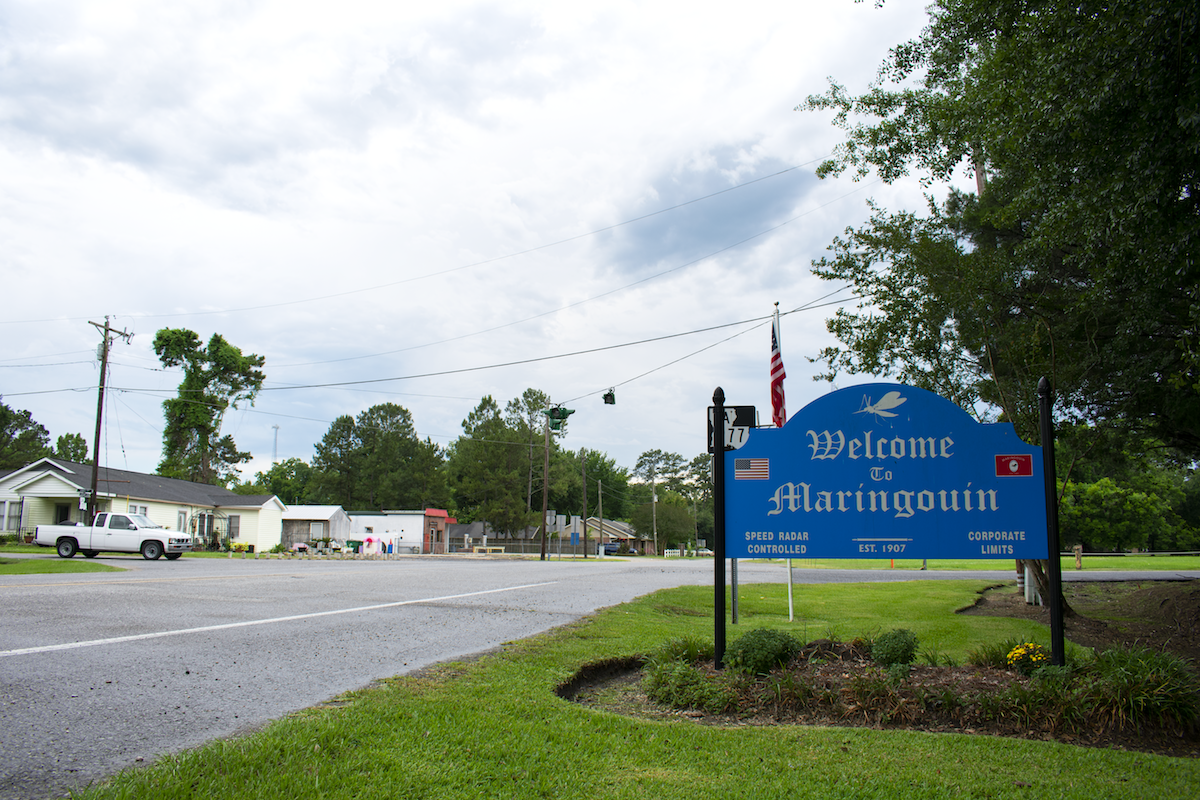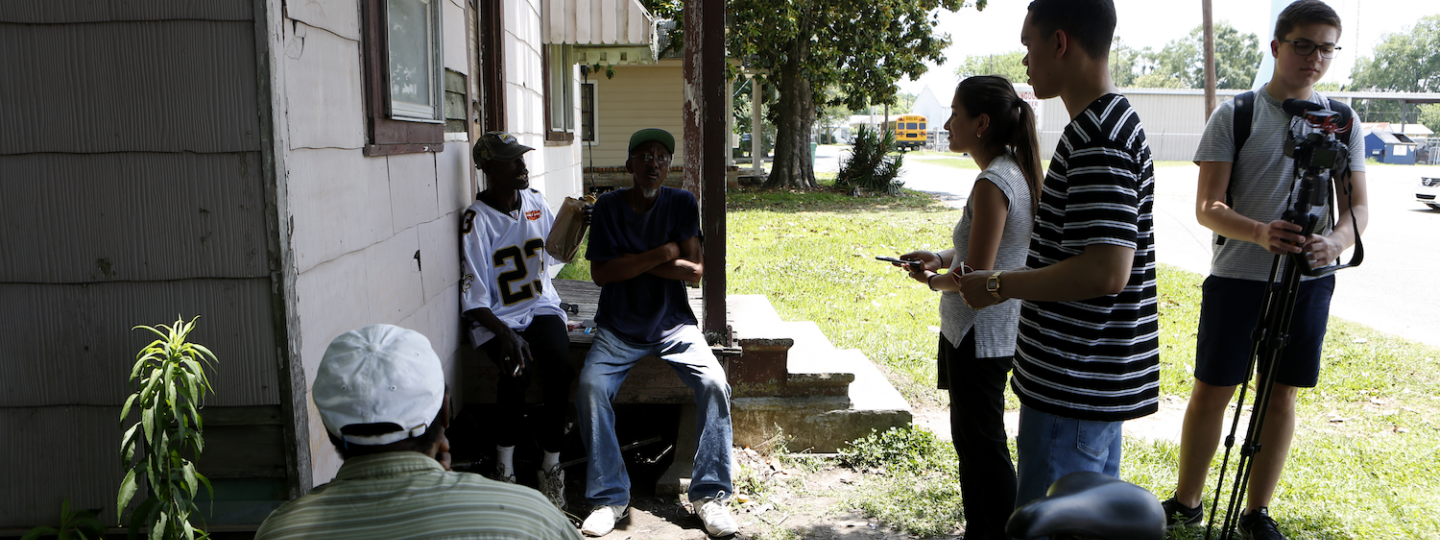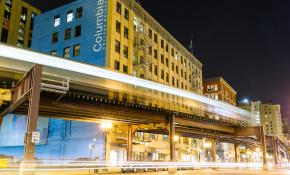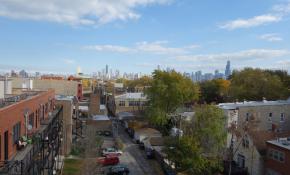Elizabeth Thomas was 23 when she first stepped into the town where her ancestors had been enslaved.
She’d heard stories about Maringouin, Louisiana, from her mother, grandparents and extended family. But until 2017, she’d never visited the small town of 1,000 people outside Baton Rouge.
The trip with her mom and cousin came after Thomas learned she was a descendant of slaves sold to Maringouin by Jesuit leaders in 1838 to keep Georgetown University financially afloat. She and her brother, Shepard Thomas, both decided to apply to Georgetown after the university offered descendants of the 272 slaves legacy status for admission.
This May, Elizabeth traveled back with Shepard and seven journalists from the Hoya, Georgetown’s independent student newspaper.
“The first time I visited, with the 272 and the history of my family being there, it was a lot to take in and a lot to process,” said Elizabeth, who grew up in New Orleans. “The second time with the team and my brother, I had more of a clear head to take in the town for what it was.”
Student journalists from the Hoya have spent the past few years reporting on the university’s reconciliation with its slaveholding past. The Tracing the 272 project focuses on the slaves’ descendants who are still concentrated around Maringouin, a town without a secondary school.
“The university can say they’re in touch with descendants and focusing on those relationships, but there was no way to be sure any of that was true without talking to the descendants and going down to Louisiana,” said editor Aly Pachter, a Georgetown senior.
Planning the trip
Pachter had reported for the Hoya on Georgetown’s history of slavery since her first semester on campus. In fall 2015, student protests led to the renaming of two buildings that reflected the university’s slaveholding past.
The next year, Pachter wrote a story about three descendants who decided to come to the university as students, including Elizabeth and Shepard, after the university granted them legacy status.
But there still wasn’t enough public focus on the descendants themselves, she thought. She wanted to talk with those who were still in Louisiana, not coming up to Washington, D.C. The Hoya had never planned a reporting trip before, Pachter said, other than sending one sports reporter to an out-of-town basketball game.
As a member of the Hoya’s board of directors, she applied for a grant from the Fund for Investigative Journalism, a nonprofit that supports investigative reporting projects. The foundation provided $7,500, and an online campus fundraiser raised another $1,000.
As the budget came together, Pachter assembled the Hoya’s team, focusing on students of color and younger staffers who would be able to carry on the reporting. She asked Elizabeth and Shepard if they would come on the trip with the Hoya staff, and both agreed. Elizabeth had visited Maringouin before, but Shepard never had.
Elizabeth Thomas is a master’s student in journalism, but she knew she couldn’t keep her opinions and emotions out of her reporting.
“I wanted to go in with my past experiences, emotions and knowledge, and let that impact my writing and how I reflected to the Hoya and readers what I thought,” she said. “My family was enslaved by Georgetown and sold to Maringouin. This isn’t something I can have an objective or unbiased opinion on.”
Pachter started planning stories and setting up interviews. Karla Leyja, the Hoya’s creative director, started thinking about how to approach visuals with the other two photographers going to Maringouin.
“Coming from a position of lots of privilege at Georgetown, I didn’t want to take these flat obvious photos of how the community isn’t as economically developed, how these people live so differently from us,” Leyja said. “I wanted to really understand what life was there like and capture that visually.”

Visiting Maringouin
The nine Hoya journalists had prepared for conversations with descendants, but when they got to Maringouin, they soon hit an obstacle they hadn’t anticipated. Many Maringouin residents had no idea of the town’s connection to Georgetown, let alone their own status as descendants, Pachter said.
In conversations after church services, at cemeteries and around the town, they found themselves informing residents about their own family history.
“We didn’t want to take on that role as student journalists, but as students, we had answers to a lot of those questions,” Pachter said. “It was really emotional for all of us.”
When those conversations came up, the group relied on Shepard and Elizabeth’s personal connections to break the ice.
“I’d walk up to somebody and tell them who my grandpa was, and they’d smile because they knew him,” said Shepard, who transferred from Louisiana State University to Georgetown. “That was very helpful in starting a conversation and getting someone to open up.”
Sometimes those conversations introduced him to family. One man he met in a gas station, Bertrand Woolfolk, ended up being his cousin. Woolfolk drove Shepard to his grandmother’s house, where they talked for hours about what the university could provide for descendants.
Shepard said he believes the university needs to provide for the future of the town itself. Legacy status doesn’t make attending an Ivy League university realistic for students who grow up without a secondary school in their town, he said.
“In a town lacking a proper educational system and economic opportunity, Georgetown’s policy providing legacy status in admissions for descendants in Maringouin lies at the end of a path littered with large, seemingly insurmountable hurdles,” he wrote in a commentary piece after the trip.
The town’s high school closed in 2009 due to low enrollment, leaving students to commute more than an hour to the nearest secondary schools. Margo Snipe, an incoming Georgetown junior, reported on the town’s education for the Hoya.
The team also visited a former plantation that’s now a museum about slavery in Louisiana, the state archives in Baton Rouge, and met with a genealogist for the Georgetown Memory Project. They spent each evening at their motel outside Baton Rouge to discuss their interviews and decompress, Pachter said.
“It was a very complicated role we were coming from,” Leyja said. “We’re all Georgetown students, but we’re journalists, but we can’t distance ourselves from being members of the Georgetown community, and many of us are also people of color. There are a lot of layers.”

Looking ahead
While the response from Georgetown faculty and alumni has been positive, the most meaningful feedback has come from the descendants themselves, Snipe said.
“I wanted to include their voice and be true to what they’re saying, and that’s what makes it so difficult and time-consuming,” she said. “When people say they appreciate it and it represents them well, then I feel like I did my job right.”
Reporters are still working on more university-focused pieces, Pachter said. They’re examining the progress toward a working group’s recommendations, looking at the religious aspects of the issue, and comparing Georgetown’s reactions with other institutions.
“I want to see how this moves the conversation forward with Georgetown, how they’ll atone for owning and selling these slaves,” Elizabeth said. “They announced the preferential status last fall, and nothing’s happened since then. I’d love to see this push the conversation forward for the university to do more.”








